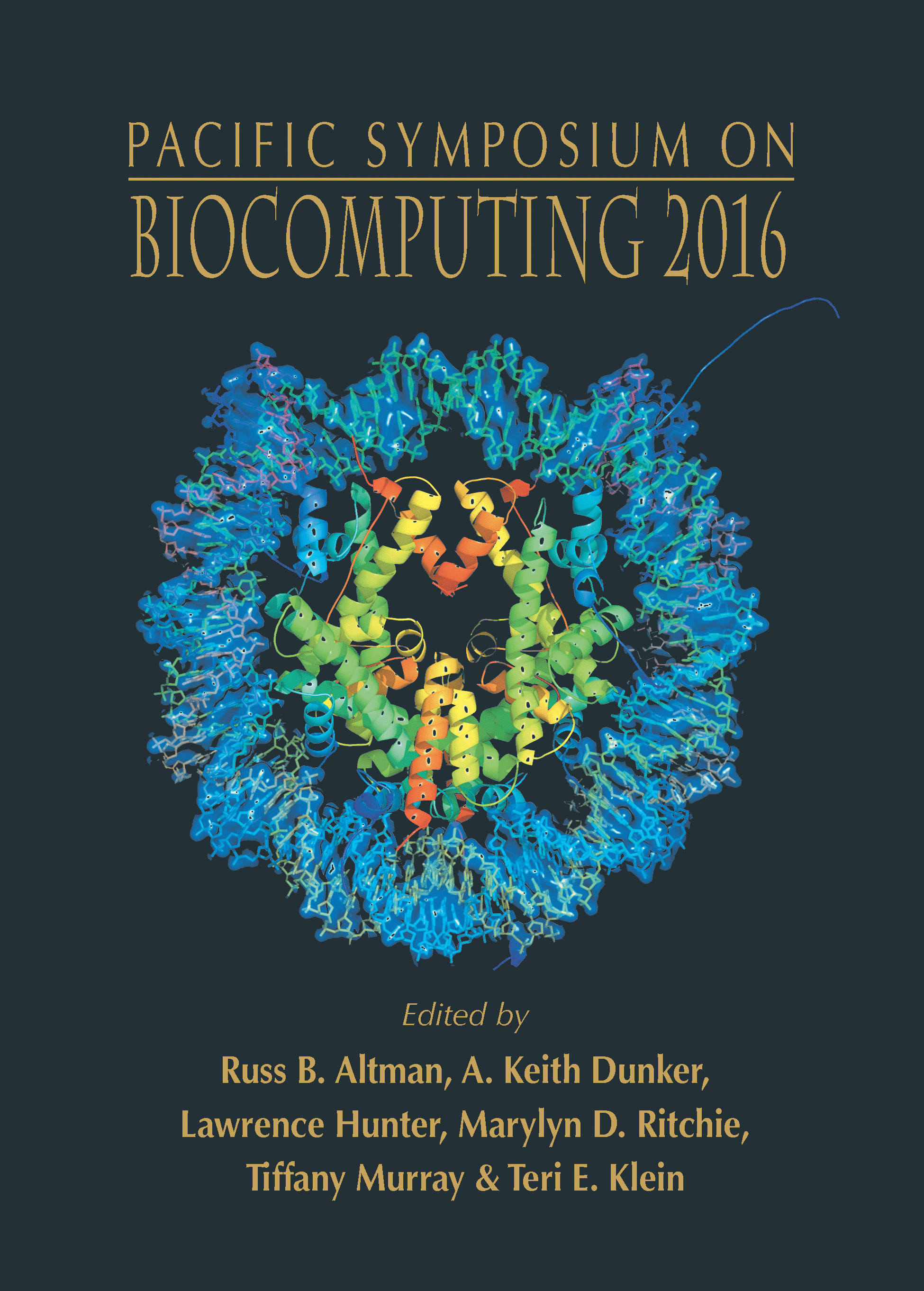
Dokyoon Kim1, Anastasia Lucas1, Joseph Glessner2, Shefali S. Verma1, Yuki Bradford1, Ruowang Li1, Alex T. Frase1, Hakon Hakonarson2, Peggy Peissig3, Murray Brilliant3, Marylyn D. Ritchie1,4
1Center for Systems Genomics, Department of Biochemistry and Molecular Biology, Pennsylvania State University
2Center for Applied Genomics, Children’s Hospital of Philadelphia
3Biomedical Informatics Research Center, Marshfield Clinic Research Foundation
4Biomedical & Translational Informatics, Geisinger Health System
Email: marylyn.ritchie@psu.edu
Pacific Symposium on Biocomputing 21:357-368(2016)
© 2016 World Scientific
Open Access chapter published by World Scientific Publishing Company and distributed under the terms of the Creative Commons Attribution (CC BY) 4.0 License.
Recent studies on copy number variation (CNV) have suggested that an increasing burden of CNVs is associated with susceptibility or resistance to disease. A large number of genes or genomic loci contribute to complex diseases such as autism. Thus, total genomic copy number burden, as an accumulation of copy number change, is a meaningful measure of genomic instability to identify the association between global genetic effects and phenotypes of interest. However, no systematic annotation pipeline has been developed to interpret biological meaning based on the accumulation of copy number change across the genome associated with a phenotype of interest. In this study, we develop a comprehensive and systematic pipeline for annotating copy number variants into genes/genomic regions and subsequently pathways and other gene groups using Biofilter – a bioinformatics tool that aggregates over a dozen publicly available databases of prior biological knowledge. Next we conduct enrichment tests of biologically defined groupings of CNVs including genes, pathways, Gene Ontology, or protein families. We applied the proposed pipeline to a CNV dataset from the Marshfield Clinic Personalized Medicine Research Project (PMRP) in a quantitative trait phenotype derived from the electronic health record – total cholesterol. We identified several significant pathways such as toll-like receptor signaling pathway and hepatitis C pathway, gene ontologies (GOs) of nucleoside triphosphatase activity (NTPase) and response to virus, and protein families such as cell morphogenesis that are associated with the total cholesterol phenotype based on CNV profiles (permutation p-value < 0.01). Based on the copy number burden analysis, it follows that the more and larger the copy number changes, the more likely that one or more target genes that influence disease risk and phenotypic severity will be affected. Thus, our study suggests the proposed enrichment pipeline could improve the interpretability of copy number burden analysis where hundreds of loci or genes contribute toward disease susceptibility via biological knowledge groups such as pathways. This CNV annotation pipeline with Biofilter can be used for CNV data from any genotyping or sequencing platform and to explore CNV enrichment for any traits or phenotypes. Biofilter continues to be a powerful bioinformatics tool for annotating, filtering, and constructing biologically informed models for association analysis – now including copy number variants.